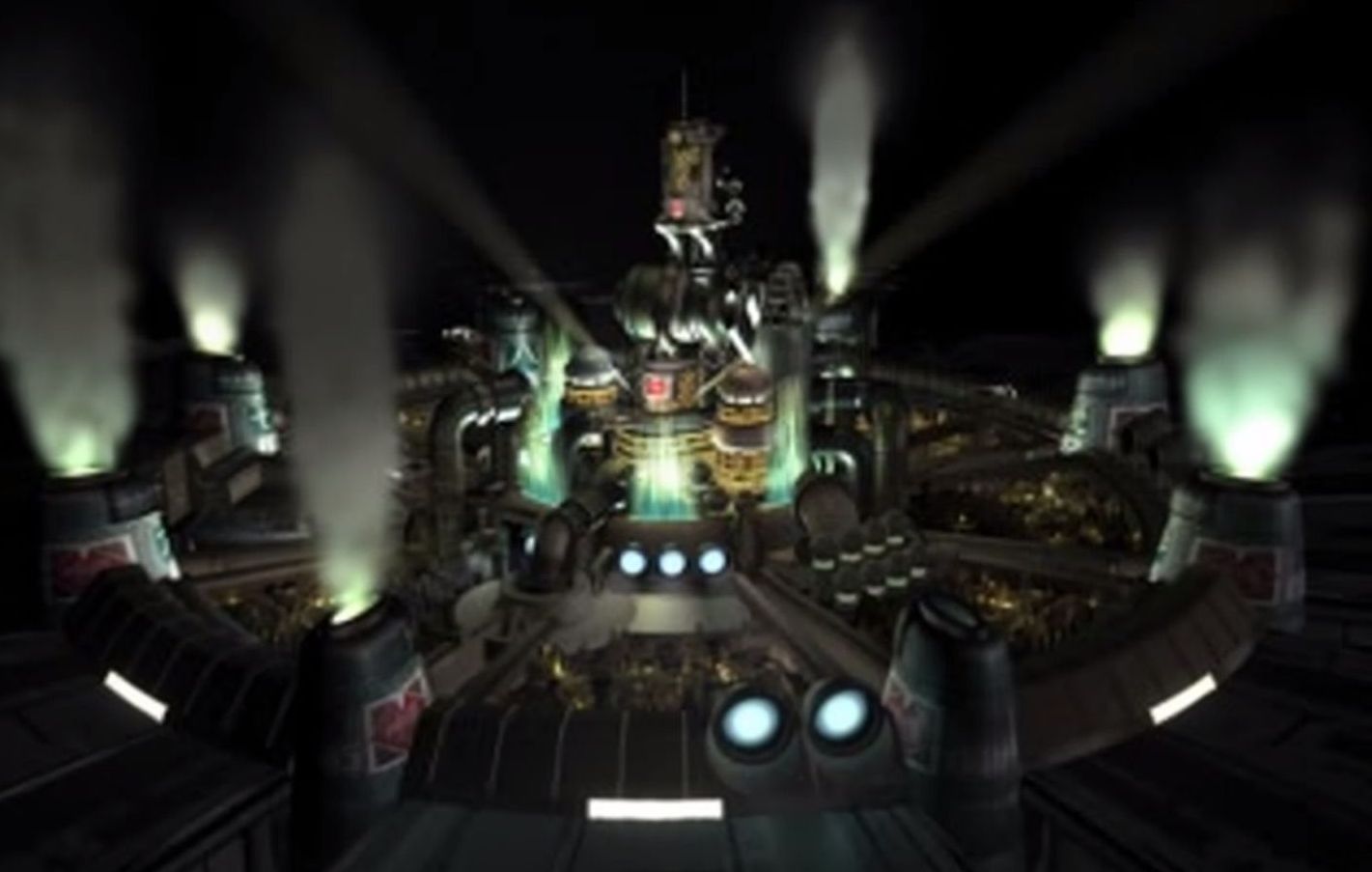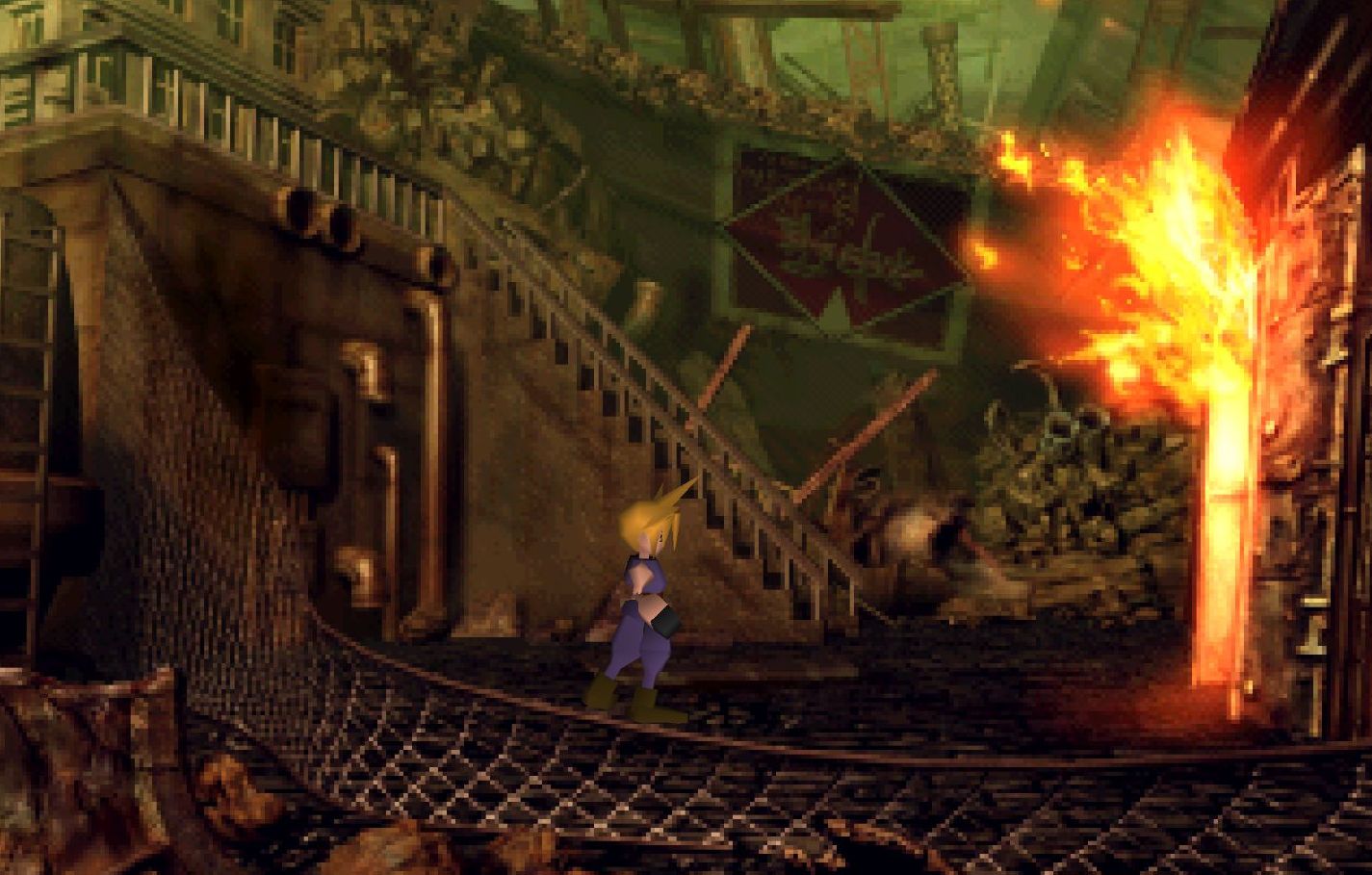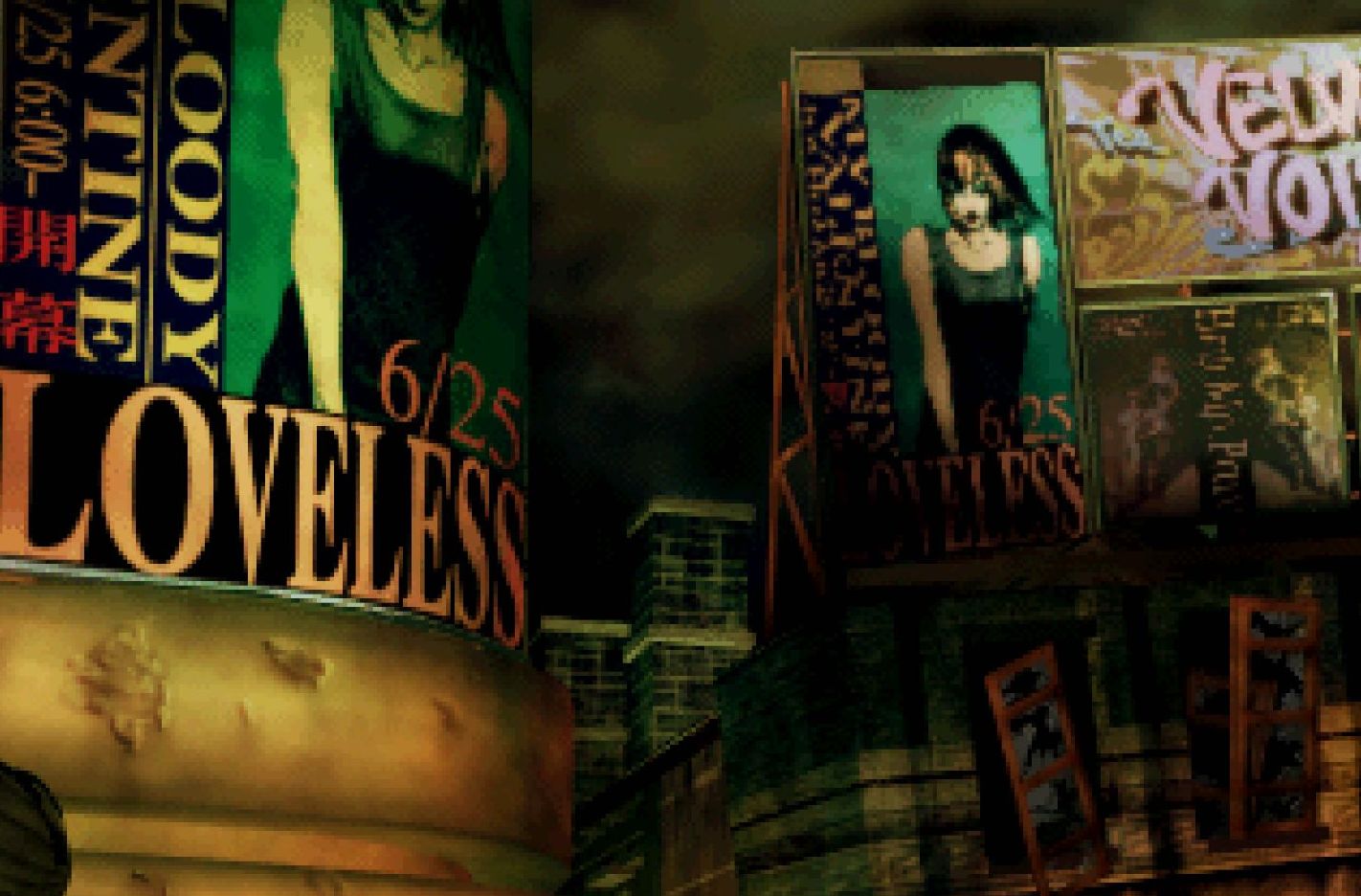Why I Love: Midgar in Final Fantasy 7
Returning to Final Fantasy's finest location.

In Why I Love, PC Gamer writers pick an aspect of PC gaming that they love and write about why it's brilliant. Today, Tom goes back to Midgar which he should marry because he loves it so much.
I played Final Fantasy 7 at a formative age, when art and music leaves an afterimage on the soul that never fades. I can't help it. I'm behaviourally conditioned to feel things when Nobuo Uematsu's score ushers in the train in 7's opening cutscene. It must look so old and frayed to eyes brought up on modern HD fare, but it makes me want to grab the nearest human and show them the best bit, when the camera flies up to show Midgar in all its disgusting splendour, and then pushes you down again into its guts. "Look at that! Look at that magnificent belching shithole!" I'll shout before my captive has chance to call for help.
Nostalgia makes it difficult to think analytically about Midgar. For a 13 year old kid in the UK with no proper internet that city was a breathtaking vision of industrial living gone wrong. Midgar was my Blade Runner. Years later I'd discover manga and Akira's animated bike battles, but until then Midgar also served as my only contact with Japanese pop culture, and I wanted more. I took every slim opportunity the game presented to go back and steal more ethers from the NPCs' unsecured homes.
Even today, I'm struck by the detail in every shot. it's a place full of rubble, twisted rebars and broken chain link fences. And pipes. In hindsight, Squaresoft probably went too far with the pipes, but they're part of Midgar's contradictory identity. It's a place that runs on electricity, steam and magic all at the same time, but for all of that infrastructure, it's falling apart. Technology here has become an ugly, suffocating force. When you eventually escape to the world map—finally, sunshine!—you see the city for what it is, a huge black bruise, sucking the life out of the surrounding wasteland.

I love it, but it's easy to romanticise these things in hindsight. Let's remind ourselves of Midgar's humble origins. UK editor Sam Roberts once spoke to FF7 art director Yusuke Naora, who said the city was inspired by a pizza he saw one day when he was stuck for ideas. Midgar is a pizza, divided into two tiers that separate rich from poor. The Shinra tower squats in the middle, a big corporate middle finger that looms over citizens below, while the pizza's slices are vast residential sectors separated by concrete walls. It remains a grim, if overly literal representation of a divided society, and the story does a great job of wringing tension out of Midgar's most obvious design flaw—what if the top tier falls?
You spend the opening act of the game exploring shanty towns far below the iron sky. They seem to have been squeezed into the city's cracks as an afterthought. The homeless sleep in broken pipes, traders hoard scrap from collapsed pillars and roadways. Objects that aren't completely necessary are never repaired. The architecture tells you everything. Human habitation is secondary to the city's primary purpose, which is to suck resources out of the planet for profit. It's a god-sized factory that your employers—the resistance/terrorist group AVALANCHE—want to destroy.

That ought to make Midgar a completely miserable place, but the first act guides you between heartwarming pockets of humanity. There's Aeris' church, lit by a ray of sunlight that's found a way through the metal ceiling. There's Tifa's bar, and the bars and shops of Wall Market. Final Fantasy 7's NPCs tend to bark their deepest frustrations, hopes and dreams at you whenever you try to talk to them. It seems silly initially, but as you explore those blunt statements collectively create an impression of Midgar's citizens. They're suffering, but they're plucky, and mostly keen to make the best of a bad deal.
I'd settle for a remake that rescued the original background art, cruelly down-rezzed to run on a Playstation 1. The static pre-rendered backgrounds are old-fashioned, but they give us a curated tour of Midgar. Shots pan down from rooftop to street-level. Sometimes the camera is hung high, amid the cables. They allowed old hardware to show ambitious scenes, like the battle for sector seven's vast supporting pillar, but they're also a series of postcards that imply greater scale and detail than a huge interactive 3D model might. A movable camera gives you the freedom to find flaws. Better that Midgar's streets remain preserved in those memorable freeze-frames forever, as gross and evocative as the day they first graced my old CRT monitor.
The biggest gaming news, reviews and hardware deals
Keep up to date with the most important stories and the best deals, as picked by the PC Gamer team.
Part of the UK team, Tom was with PC Gamer at the very beginning of the website's launch—first as a news writer, and then as online editor until his departure in 2020. His specialties are strategy games, action RPGs, hack ‘n slash games, digital card games… basically anything that he can fit on a hard drive. His final boss form is Deckard Cain.


